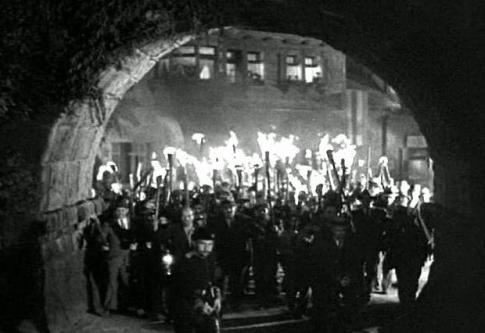Department Administration & the Awful Reality of the Internet Mob

I wrote an email this past spring that no department chair should have to write, but that increasingly, I think anyone associated with academia needs to remember we must write. It was addressed to the head of campus communications, pointing that person to a new article in a large mainstream publication, which talked in some detail about an academic field in ways that could easily draw the attention of an internet mob–those virulent wielders of word torches who are organized enough to create credible threats of physical violence. The online version of the article contained dozens of links to academic sites and articles. I followed them all. At least some of them had, within their pages, information that includes direct connections to my department.
I am being purposefully vague about the details here. Because the point of my email (which was not vague) was that the campus offices that monitor the grim portions of the internet where people coordinate attack campaigns of various kinds should know that here was a thing that might spark chatter and drive unwanted traffic directly to one of our faculty.
And after I sent the email, I felt a little sick.
Because it brought home to me that the job of department chair has grown beyond schedule planning, form filing, faculty and departmental review processes, budgeting, and helping students declare majors. It is now also about the prevention of potential violence, and about helping our campuses be as prepared as possible to address an attack that now feels inevitable–if not as a result of this article, then as a result of the next one, or the one after that.
The work of campus administration, when done well, has long been invisible. I’m thinking here not just, or even primarily, about chairs, but also deans and provosts, whose work is an iceberg: 90% existing below the visible water line. It depends on confidentiality (teaching observations, review processes, interviews for hiring faculty); on attending to bureaucratic processes that are necessary, time-consuming, and not highlighted on a daily basis (filing annual budget requests, reading all those student- and self-evaluations that come in); on figuring out what needs to be delegated and ensuring it gets done (revising catalogue or website copy, setting up ad hoc committees to write grants, planning monthly faculty meetings).
But now this invisibility also means quietly bringing to the attention of vigilant campus monitors the news items, faculty research, community events, public debates, professional organization conflicts, and other high-profile issues in higher education that might have direct, detrimental links to individuals who are part of our own campus communities.
In short, it means realizing that the angry mob no longer looks like the crowd of villagers storming the Frankenstein castle with torches and pitchforks. Instead, it looks like hordes of online abuse sent because their recipients dared to challenge white supremacist fantasies, or to write brilliant social or political or scientific analyses or pen bestselling novels while being anyone but a white cis man.
High-profile cases have shown us faculty on the receiving end of such abuse as a result of incendiary comments they posted to social media, for example. But provocative tweets are not the only target. Rigorous academic work can draw the same unwanted attention. White supremacists could not stand the article published by a Classist arguing that because ancient statues were originally brightly painted, we misunderstand their conceptions of ideal beauty if we assume the whiteness of the base marble that we see today was the original goal. Their harassment escalated to death threats.
High-profile work doesn’t have to be a New York Times listed novel or a report on a climate change. It could be something like a political science syllabus on activism that sets off a local anger that is suddenly amplified by means of the tentacles of internet fury.
The work may be targeted because of its claims or because of the identity of the scholar or both. Which means that we have to monitor not only potentially controversial scholarship, but also be attentive to the the fact that faculty of color, women, and LGBTQ faculty are more likely to face online harassment and abuse even for research, claims, pedagogies, or classroom assignments that are not, on their face, obviously controversial.
Academia is not law enforcement, although as we keep being grimly reminded, sites of learning from kindergarten onwards are also sites of violent attack. Department chairs and administrators would thus do well, as we start our new school years, to remember that paying attention to public stories that might catch the eye of the violent trolls or white supremacists is now an important part of the job of keeping our campuses safe.
RESOURCES from the MLA:
Targeted Harassment in Brief (quick overview of how online harassment campaigns typically work)
Addressing Campus Violence Online and in Your Classroom (questions to ask, people to connect with on campus, policies/procedures to know, and links to additional resources)